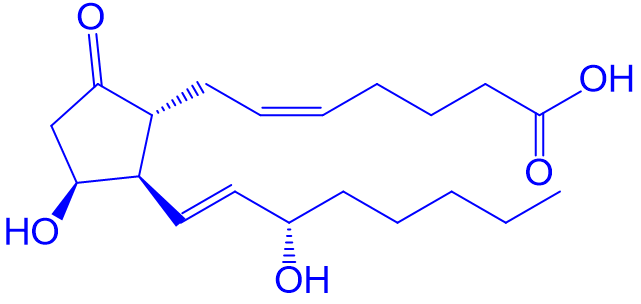9-oxo-11S,15S-dihydroxy-5Z,13E-prostadienoic Acid Analysis Service
- We can assist in the elucidation of the metabolic pathways of this compound.
- We offer quantification services to help clients understand its levels in various biological samples.
- Our team of experts can assist in data interpretation and make meaningful connections between the data and the physiological state.
- Highly skilled team with extensive experience in metabolomics and mass spectrometry.
- State-of-the-art mass spectrometry equipment for accurate identification and quantification.
- Tailored analysis approach to meet the specific needs of each client.
- Comprehensive report with detailed data analysis and interpretation.
- Understanding the role of 9-oxo-11S,15S-dihydroxy-5Z,13E-prostadienoic acid in various disease states.
- Drug development studies targeting this molecule.
- Biomarker discovery for various diseases.
- Animal tissue ≥ 100 mg
- Plant tissue ≥ 200 mg
- Serum/ Plasma ≥ 200 μL
- Urine ≥ 2 mL
9-oxo-11S,15S-dihydroxy-5Z,13E-prostadienoic acid, commonly known as Prostaglandin E2 (PGE2), is a key member of the prostaglandin family, first identified in 1976. PGE2 plays a vital role in various physiological processes, particularly in reproductive health. It is widely used in clinical settings to soften the cervix, induce uterine contractions, and assist in labor induction. In addition to its role in childbirth, PGE2 can also be used as an abortifacient and to stimulate osteoclast activity, impacting bone metabolism.
PGE2 is biosynthesized from arachidonic acid via the cyclooxygenase (COX) pathway, where COX enzymes catalyze the conversion of arachidonic acid into prostaglandin intermediates, which are then metabolized to produce PGE2. This lipid mediator is involved in regulating inflammatory responses, pain perception, and immune modulation. PGE2's influence on inflammation makes it a critical target for research in conditions such as arthritis, cancer, and autoimmune diseases. Studying its role in inflammation, reproductive health, and bone metabolism provides insights into disease mechanisms and therapeutic strategies.

Figure 1. The Structure of 9-oxo-11S,15S-dihydroxy-5Z,13E-prostadienoic Acid
MtoZ Biolabs, an integrated Chromatography and Mass Spectrometry (MS) Services Provider, providing advanced proteomics, metabolomics, and biopharmaceutical analysis services to researchers in biochemistry, biotechnology, and biopharmaceutical fields. Our ultimate aim is to provide more rapid, high-throughput, and cost-effective analysis, with exceptional data quality and minimal sample consumption. At MtoZ Biolabs, we provide a comprehensive analysis service for 9-oxo-11S,15S-dihydroxy-5Z,13E-prostadienoic acid.
Analysis Workflow

Service Advantages
Applications
Applications of our service include but are not limited to:
Sample Submission Requirements
1. Sample Types
Serum, plasma, urine, tissues, and other biological samples. It is recommended to prepare at least 3 biological replicates for each sample type.
2. Sample Volume
3. Storage and Shipping
Samples should be stored at -80℃ and shipped with dry ice. Avoid repeated cycles of freezing and thawing
Note: Please provide details on sample collection and handling.
Deliverables
1. Comprehensive Experimental Details (Materials, Instruments, and Methods, etc.)
2. Relevant Liquid Chromatography and Mass Spectrometry Parameters
3. Detailed Information on 9-oxo-11S,15S-dihydroxy-5Z,13E-prostadienoic Acid
4. Raw Data
5. Custom Analysis Report
For more information on our 9-oxo-11S,15S-dihydroxy-5Z,13E-prostadienoic acid analysis service or other services, please contact MtoZ Biolabs. Our team of experts will be more than happy to assist you with your research needs.
How to order?







